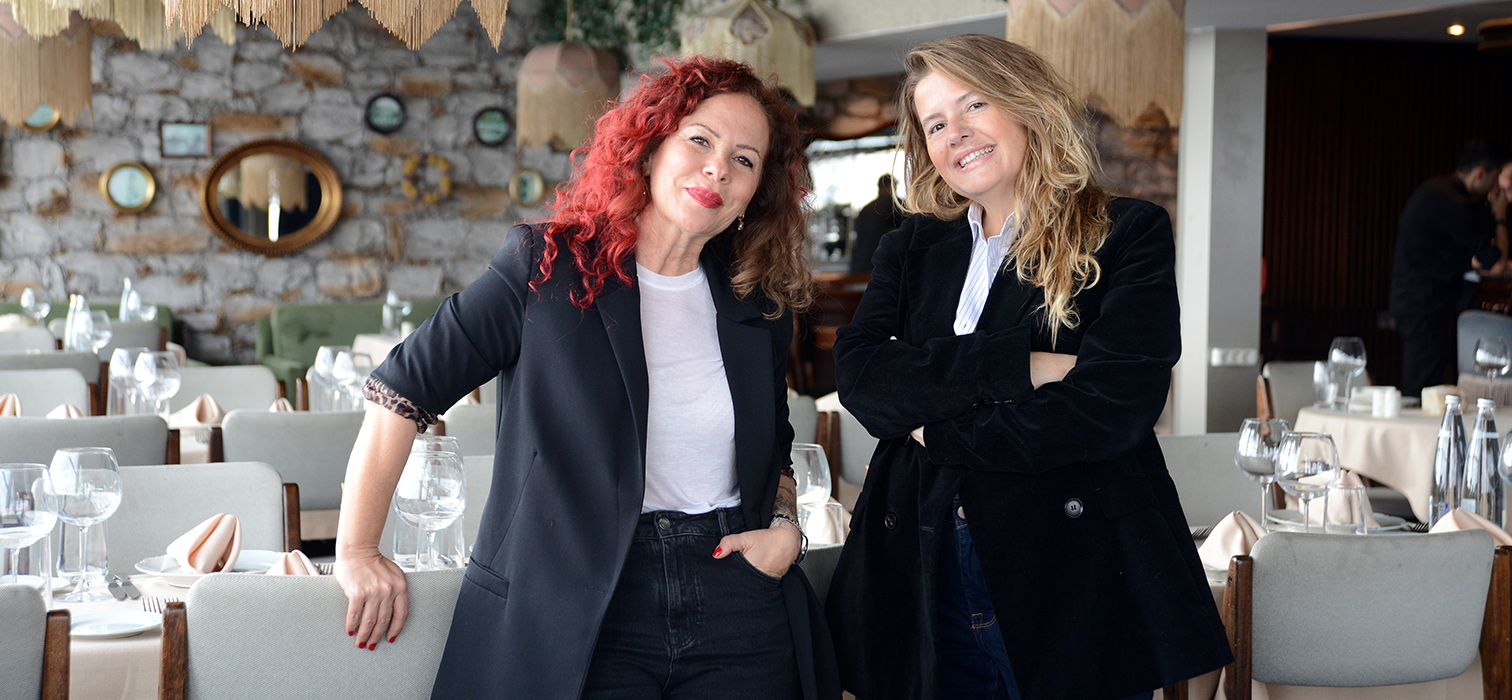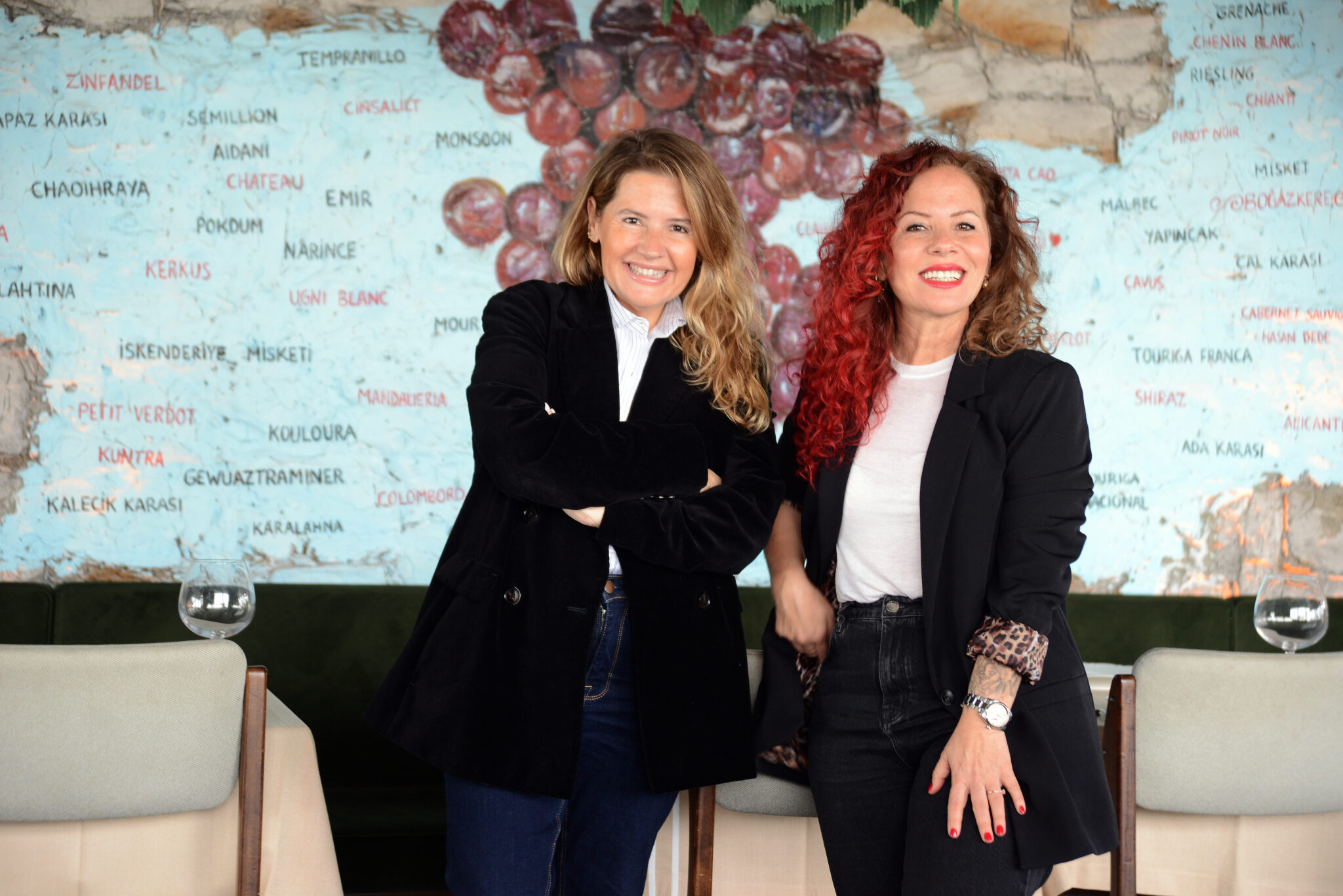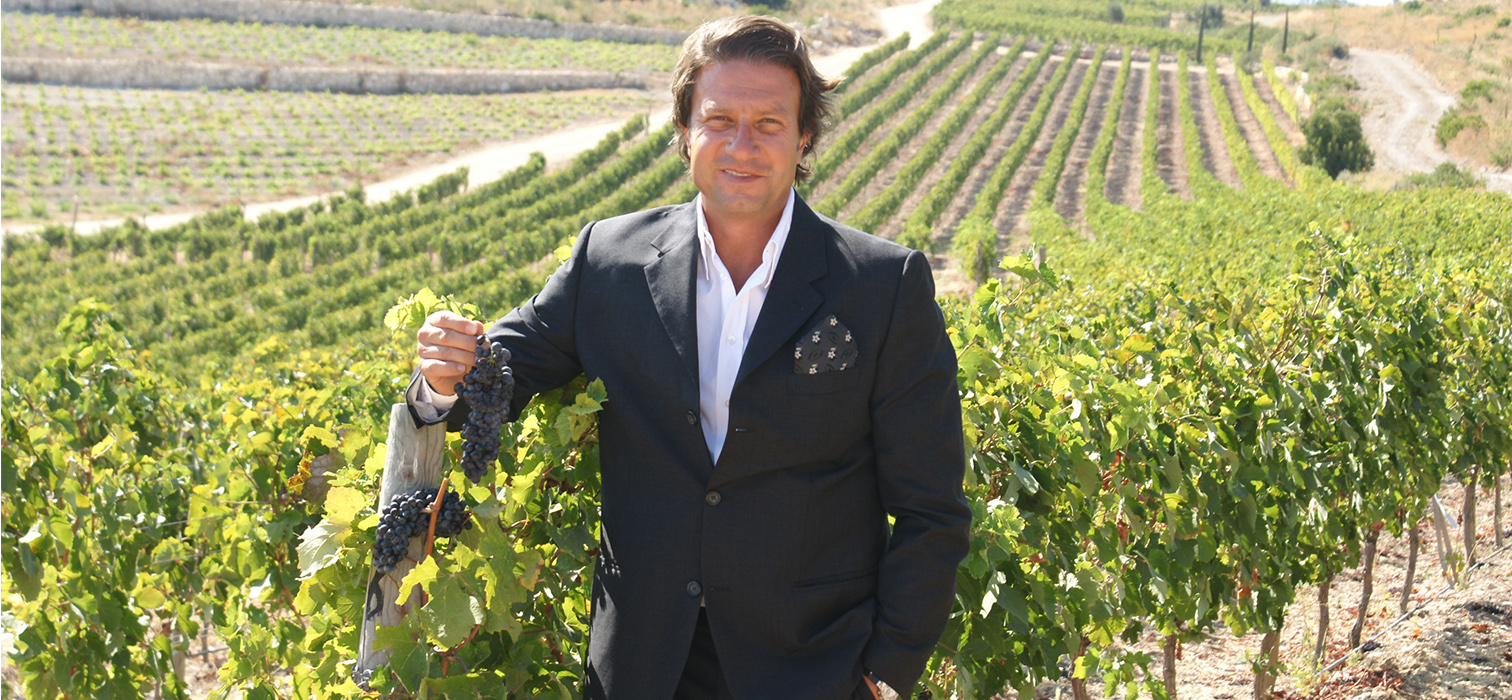
Madam Niça, which is preparing to welcome its eighth summer this year, is one of the indispensable stops of Bozcaada. The restaurant, which blends the flavors of Greek and Turkish cuisines in its menu, has been hosting its guests in Istanbul since 2020. We came together with Madam Niça’s founders, Oya Terzioğlu and Saada Delen, at their restaurant overlooking the Bosphorus and had a pleasant conversation about Madam Niça’s story and immigration cuisine.
How did begin your journey?
Oya Terzioğlu: While I was working as the coordinator of the public relations department at the university in Çanakkale, I decided to leave when I realized that I was no longer happy in my job. I went to Bozcaada and opened the small hostel that every corporate employee dreams of. It started with a small five-room guesthouse, and after a while a vineyard house was added. We started having breakfasts in this vineyard house. About seven years later, our paths crossed with Saada and we opened Madam Niça together.
Saada Delen: I was also working in a bank in Izmir. My mother is from Çanakkale, Bozcaada was a region I loved because I spent my summers there when I was a child. When my nuclear family somehow left Izmir, I moved to Bozcaada. I already loved Bozcaada very much, and I always had in mind to do something there. When I first went there, I opened a small restaurant called Ada’m. At that time, Oya and I became friends. So, at that time, we had separate jobs in Bozcaada, but we both admired the garden where Madam Niça was. This is the garden of a demolished old winery, and when it was rented out, Oya and I decided to open a place. It was an old courtyard back then; I remember we took 80 tractors trash out of it. We are now in our eighth article.
O. T.: We opened Madam Niça in Istanbul a while before the pandemic. Almost 80 percent of Bozcaada’s guest base is predominantly from Istanbul. Our guests always said, “I wish there was Madame Niça in Istanbul too.” One of our dreams when we started was to open a venue in Istanbul. Both our dreams and the demands of our guests took us on a Madam Niça journey in Istanbul.

What is the story of the name?
O. T.: Madam Niça is daughter of one of the Greek families of the island, from the lady who owns the garden in Bozcaada. A lady who lived her life alone, we wanted to keep her name alive in some way and gave it to our restaurant.
S. D.: It is an interesting coincidence that Madame Niça lived in Gümüşsuyu, Istanbul, very close to the Istanbul leg of our restaurant.
The restaurant also houses Sahne Niça. How was it born?
O. T.: Some demands in the food and beverage industry changed after the pandemic. In the past, one would go to a restaurant, eat there for long hours, and then go to another place to listen to music. After stage hours were shortened following the pandemic, guests began to demand a model where they could both eat and have fun at the venue they came to. This took us to Sahne Niça. Under the supervision of a music director, there are musical performances at Sahne Niça on certain days of the week.
You come from families with a history of migration, I would like to hear about migration cuisine from you.
O. T.: Both of our families have experienced migration in some way; my family emigrated from Crete and Saada’s family emigrated from Thessaloniki. Likewise, Bozcaada is a place with a history of migration; we also make Greek and Turkish appetizers there. Istanbul, on the other hand, is a city that has received immigration from many more cultures and countries. It has a cuisine that combines recipes from different cultures. When people migrate, they can only bring their memories, family recipes and tastes from their tables. Remembering and re-tasting these flavors from the past makes everyone feel good. For example, when you eat a pastry similar to your grandmother’s in a place, you want to go there again. Culinary culture and the tables we set had an important place in our families. We wanted to keep this alive. At Madam Niça, we cook seasonal dishes, just like on the tables at home with vegetables in season. On the other hand, we aim to be waste-free and sustainable. If we are making an appetizer from the root of the beet, we can also roast the green part and make another appetizer by using it in yoghurt. This is also the case in migration cuisine; the limited ingredients available are utilized in various ways.

Where do the fruits and vegetables you use come from?
S. D.: We try to bring it from its homeland such as Bozcaada, Kazdağları or Bayramiç. We also have a shop called Dükkan Madam Niça. We implemented it during the pandemic period, in a way it was like a social responsibility project for us. We researched women’s cooperatives and collected samples, and we sell the products we selected the best in the shop Madam Niça. It continues. It is like a child that will grow up for us.
Is there a woman collective in Madam Niça?
O. T.: We created Madam Niça as two women in a male-dominated industry. We raised him under difficult conditions and turned him into young being. As we mentioned, we work with women’s cooperatives and shop from women producers in the markets. Our kitchen and service chef is a woman, and our teammates who provide security in Bozcaada are also women. We strongly believe in women’s energy and how it can ease even the biggest tensions.
There are migrations from Crete and Thessaloniki in your families. What kind of flavors did your own immigration cuisines have?
S. D.: My grandmother had very interesting dishes from the immigrant cuisine. There was a dish she cooked using only tomatoes, and it was called “The cat caught my fish.” In fact, it is a dish brought about by poverty. When there was no fish, they named the dish “The cat caught my fish.” She was cooking it with tomatoes, olive oil and garlic. After cooking, she would put it on bread and keep it in the refrigerator for a while.
O. T.: My mother was a seven-year-old from Istanbul, and they used to bring Istanbul olive oil dishes to the table. On my father’s side, Cretan delicacies, herbs, fennel with lamb meat, endive salads, şevketibostan… Fennel with lamb meat is one of my favorite dishes.
What was the teaching of this culture?
S. D.: My family came from Thessaloniki, Oya’s family came from Crete. Everyone has migrated, everyone has a different journey. This was the most important thing I learned from this culture; Everyone has a travel story.
O. T.: I want to pass on the stories I heard from my father, about being content with little and protecting abundance, to my daughter and to as many people as I can. What I took as a guide from these stories was to share and pass on. I am collecting family recipes; my intention is to compile them into a book one day and share them with everyone.

What are your favorite flavors at Madam Niça?
S. D.: I love Albanian liver; our kitchen prepares it very delicious.
O. T.: I love all of our appetizers such as almond tzatziki prepared with mint oil and olive oil. Our Madam Niça pastries, which we prepare with hot pepper jam and baklava dough, are also delicious. Our sleepy meal served with cognac and pumpkin sauce is also one of my favorites.
How is your menu prepared?
O. T.: We leave the menu to our kitchen chef, they prepare a menu for us at seasonal changes, and we go over it with Saada.
S. D.: We are both traditionalists and classicists. We prefer to capture real flavors; we would like to have artichokes in season, and grate Ezine cheese over tomatoes when the time comes. For example, we shop for offal from the oldest butcher in Istanbul. We want seasonal and real flavors.
O. T.: Madam Niça is a kitchen with classic recipes. We love the cuisine of the minority that has existed since the migration and try to keep it alive. I think people will quickly get bored of experimental prescriptions. The classic always remains. Simple is beautiful, but the material must be very good.
Who inspired you on this journey?
S. D.: Özcan Germiyanoğlu is one of the women I take as an example with her stance and gusto. She is one of those women who can shoulder the north wind and stand tall.
O. T.: I love cooking and hosting guests, these inspired me mostly on this journey. But I would also like to talk about Maria; Maria Ekmekçioğlu was my guest at my previous business before Madam Niça, and she completed one of her books in my then vineyard house. Maria made me realize my skills in setting the table and hosting guests.
Madam Niça is one of our destinations in Bozcaada. So, what else do you think should be done on the island?
O. T.: Bozcaada is a beautiful and must-experience holiday destination in four seasons. The island’s summer season is from spring to October. One should eat grapes during grape harvest and drink wine during vineyard harvest. I definitely recommend tasting the local wines, they are all beautiful in their own way. I also recommend spending a sunset at one of the restaurants in Ayazma.
S. D.: There is a lot to do in a day; walking on the cobblestone streets, seeing the church, witnessing the sunrise and sunset… There is also watching the fishermen return from fishing in the morning and being at the fisherman’s cafe in the morning. Traditional flavors should definitely be tried; raw stuffing, mafiş dessert, and if it’s time for goat rotisserie.
We started with Madame Niça, let’s end with her. How do you want your guests to feel when they leave Madam Niça?
S.D.: I want them to leave as if they were leaving their home. This place is like Madame Niça’s Istanbul house.
O. T.: It is very important for us that they feel belonging and safe. I want them to feel like they went home and sat at their family table. The most important thing is that our guests leave here with delicious taste on their palate and beautiful melodies in their ears.



